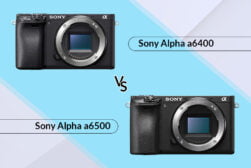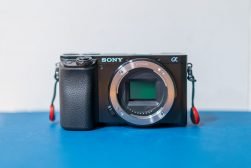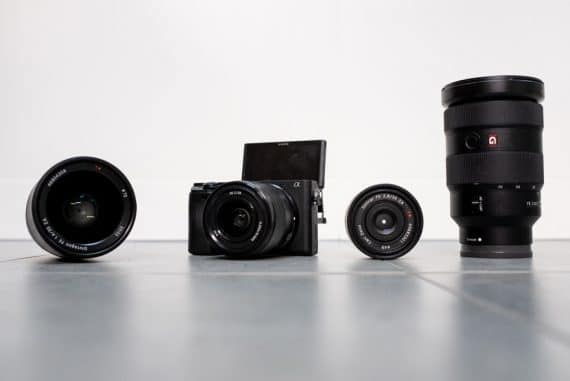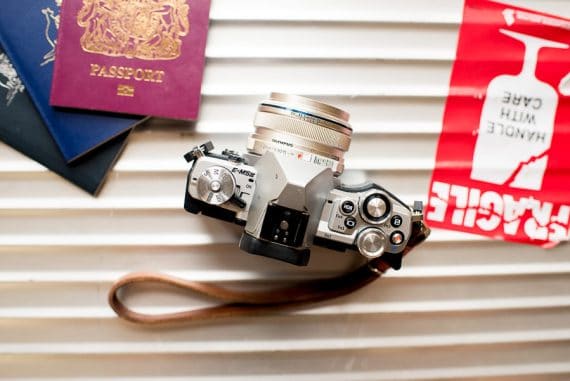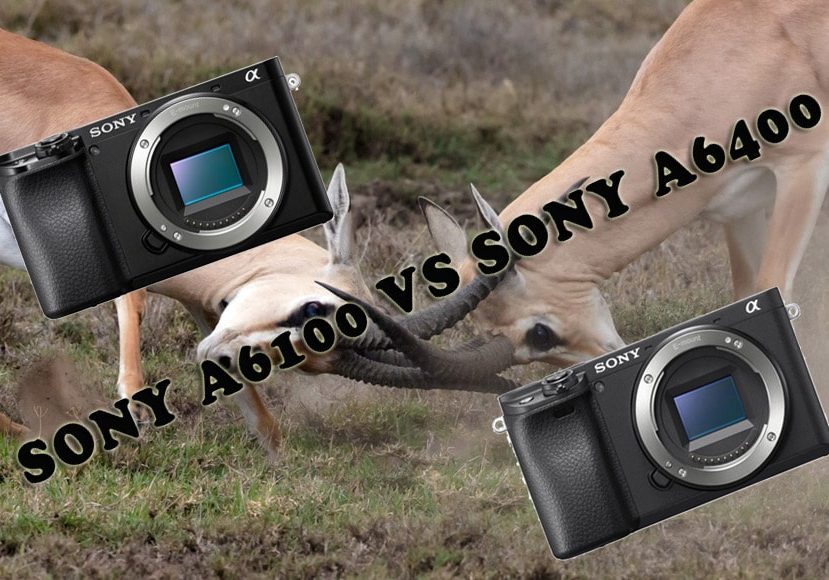
Sony a6100 vs a6400: 14 Key Differences
If you're trying to decide between the Sony a6100 and a6400 crop sensor mirrorless cameras, this guide will help! Discover the XX key differences between them.
A triad of Sony Alpha cameras has been added to the Sony aps-c line up: the a6100, a6400, and a6600. All three cameras are extraordinary mirrorless cameras, feature-rich, and deliver excellent image quality.
If you’ve already decided the Sony a6600 is out of your reach and are trying to decide between the Sony a6100 and the Sony a6400 , it’s a tough choice – they’re similar and come at almost the same price point.

Better weather-resistant body, larger image buffer and all-round better video capabilities make the a6400 the better choice if your budget allows.
But don’t despair – there are a few small, yet significant differences between these two immensely popular mirrorless cameras.
Let’s take a look at what they have in common and, more importantly, what sets them apart.
(You can also check out our a6100 review and a6400 review for a more in-depth comparison.)
Sony a6100 vs a6400: Common Features
A detailed comparison shows that in many ways the Sony a6100 and a6400 are virtually identical.
The two cameras share
- the same 24.2MP sensor and Exmor CMOS chip, as well as an anti-aliasing filter and a front-end LSI component.
- the same fantastic hybrid autofocus system, which uses a combination of 425 phase-detection points and 425 contrast-detection points. It features a remarkably fast focus acquisition time of 0.02s, Real-Time tracking for both stills and video, and AI and machine learning technology.
- the ability to record 4K video up to 30fps and 100Mbps, using the entire width of the sensor. Both cameras have internal slow-motion recording capabilities that can do full HD up to 120fps.
- 11fps continuous shooting, including AE/AF tracking. (It goes down to 8fps when the electronic shutter is engaged.)
All this is to say that the performance of both of these cameras is virtually identical, especially when shooting still photos. (There are a few differences in video, which I’ll cover later in the article.)
Other features they share:
- 180-degree tilting LCD screen with Touch Tracking
- the Sony E mount
- a single SD card slot (UHS-I compliant)
- a built-in intervalometer for time-lapse shooting
- a built-in flash (GN6, ISO 100)
- excellent internal audio recording
- 3.5mm microphone port, allowing you to connect an external microphone
- the same NP-FW50 rechargeable lithium-ion battery pack
- the latest version of Sony’s menu system
- 8 function buttons
One thing neither camera has is in-body image stabilization. You’ll have to bump up to the Sony a6600 for in-body stabilization.
Also, neither camera has an optical viewfinder. They rely instead on the electronic viewfinder.
Sony a6100 vs a6400: 14 Key Differences
Shockingly similar or not, there are a few key differences between the
To begin with, the Sony a6100 is more of an entry-level model, while the Sony a6400 comfortably sits in the mid-range model arena.
Let’s start off with the physical differences. Here is the Sony Alpha 6100 vs Sony Alpha 6400 specs tale of the tape.
1. Camera Body
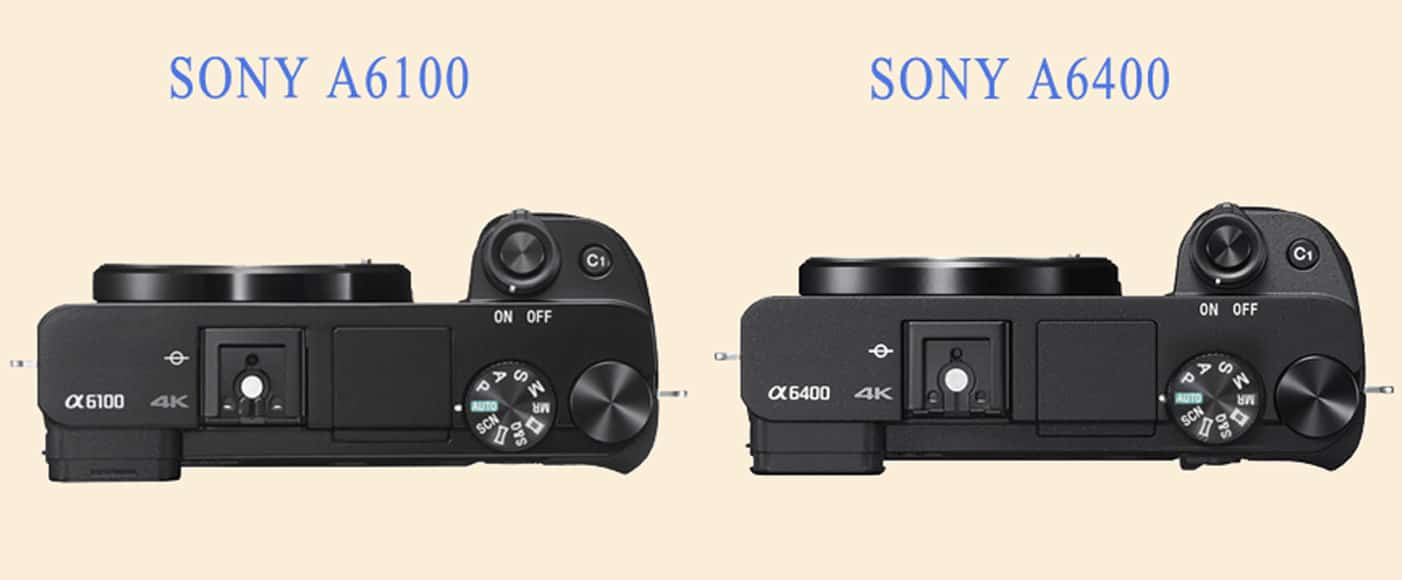
While the Sony a6100 and the Sony a6400 are virtually identical in layout, they’re made of considerable different materials. The magnesium alloy of the a6400 gives it basic weather sealing and a more durable build.
Perhaps the most noticeable difference between these two Sony cameras right of the box is in the camera body. Both cameras have pretty much the same dimensions, a tilting LCD screen, and the same layout, but they’re made of different materials.
The Sony a6100 is made primarily of polycarbonate, has no weather sealing, and is just a hair lighter than the A6400 (396g).
The Sony a6400 has a more durable magnesium alloy body, basic weather sealing, and weighs in at 403g. (It’s unlikely that you’ll notice the 7g, but for some folks, this might be a significant difference.)
Depending on the lenses you use with the a6100 or a6400, you may also want to consider an additional hand grip Sony accessory, which will help a lot if you tend to attach heavier zooms to your camera.
2. Shutter Life
The shutter life of a camera pretty much determines how many shots your camera is good for.
Sony rates the mechanical shutter life of the a6100 at 100,000 clicks. The Sony a6400, on the other hand, is rated for twice that, at 200,000 shutter cycles.
Of course, the shutter rating isn’t a guarantee that you’ll get to that photo count before needing shutter maintenance, but it does give an overall estimate. In this round of the Sony Alpha a6100 vs a6400, the a6400 has the clear advantage.
3. Electronic Viewfinder Resolution
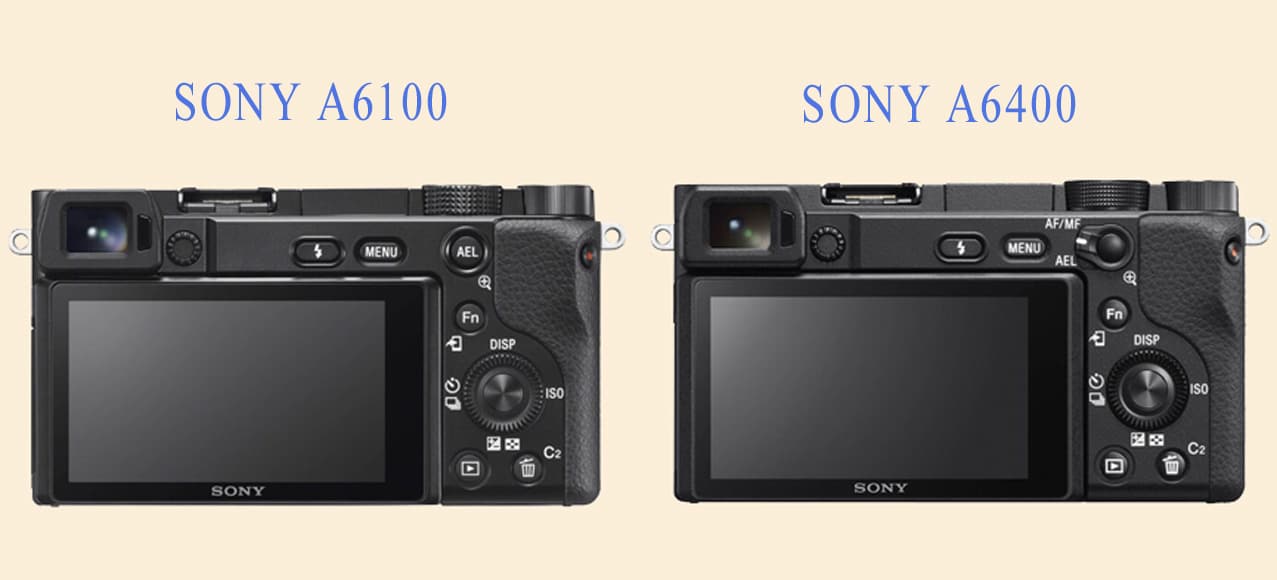
While the tilting touch screen is the same dimensions on both cameras, the Sony a6400’s LCD screen has a considerably higher resolution.
Physically, the viewfinder is the same on both cameras, featuring an 0.39-inch OLED panel, 0.70x magnification, and a 23mm eye-point.
When it comes to resolution, though, the EVF of the Sony a6100 is just 1,440,000 dots, a bit low in a market where the industry standard is usually 2.4 million dots. In contrast, the Sony a6400, has a higher resolution EVF of 2,359,296 dots – much more the norm.
Given that neither camera has an optical viewfinder, the higher resolution of the a6400 may be is pretty significant, especially if you’re fond of manual focus.
That’s pretty much it for physical differences. Now let’s look at what the two cameras have under the hood.
4. Processor
The Sony a6400 has a slightly faster processor than the Sony a6100. This gives it a deeper buffer, more extended ISO capacity, and phase detection autofocus while shooting video. It also gives it a slightly shorter battery life.





